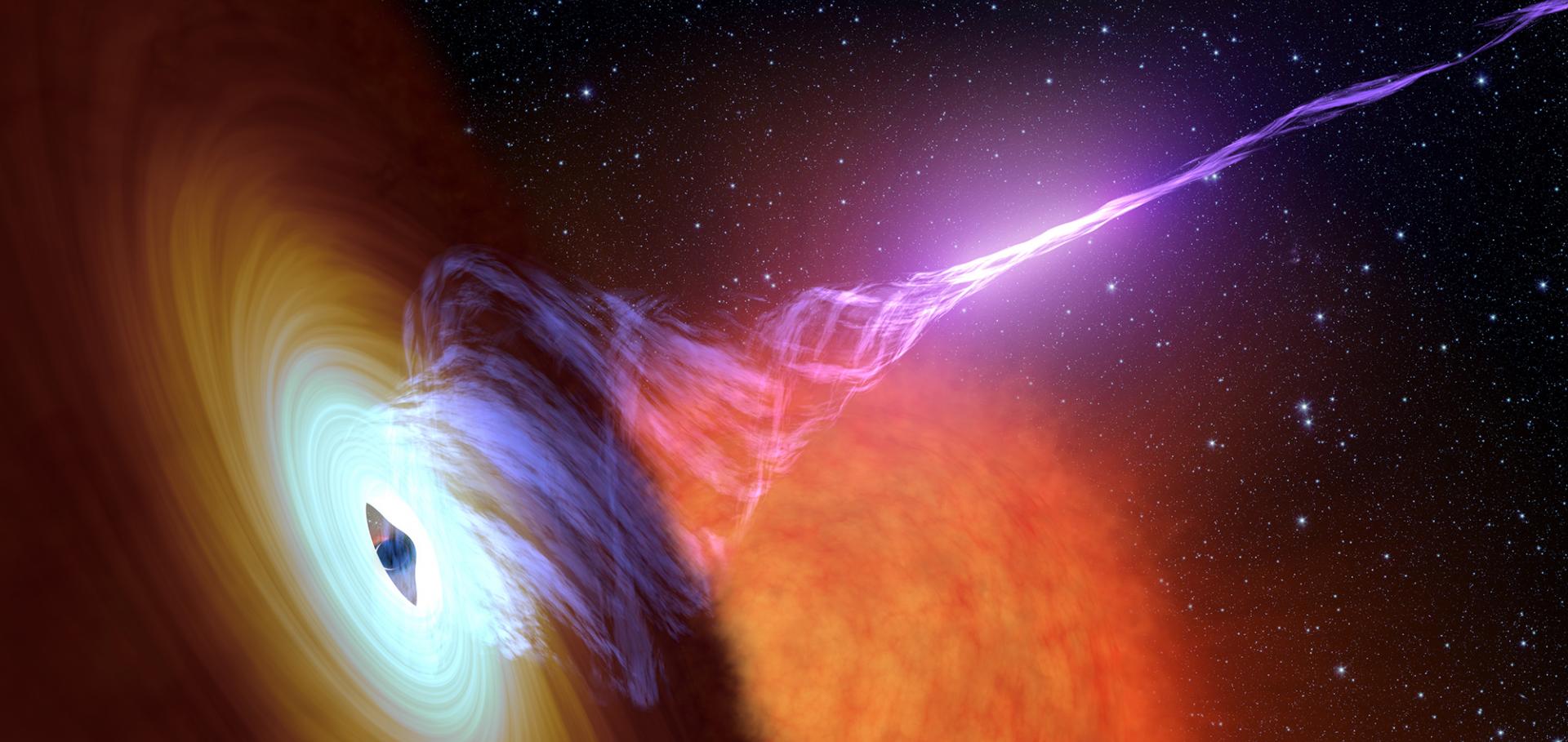Radio continuum surveys with square kilometre array pathfinders
Publications of the Astronomical Society of Australia 30:1 (2013)
Abstract:
In the lead-up to the Square Kilometre Array (SKA) project, several next-generation radio telescopes and upgrades are already being built around the world. These include APERTIF (The Netherlands), ASKAP (Australia), e-MERLIN (UK), VLA (USA), e-EVN (based in Europe), LOFAR (The Netherlands), MeerKAT (South Africa), and the Murchison Widefield Array. Each of these new instruments has different strengths, and coordination of surveys between them can help maximise the science from each of them. A radio continuum survey is being planned on each of them with the primary science objective of understanding the formation and evolution of galaxies over cosmic time, and the cosmological parameters and large-scale structures which drive it. In pursuit of this objective, the different teams are developing a variety of new techniques, and refining existing ones. To achieve these exciting scientific goals, many technical challenges must be addressed by the survey instruments. Given the limited resources of the global radio-astronomical community, it is essential that we pool our skills and knowledge. We do not have sufficient resources to enjoy the luxury of re-inventing wheels. We face significant challenges in calibration, imaging, source extraction and measurement, classification and cross-identification, redshift determination, stacking, and data-intensive research. As these instruments extend the observational parameters, we will face further unexpected challenges in calibration, imaging, and interpretation. If we are to realise the full scientific potential of these expensive instruments, it is essential that we devote enough resources and careful study to understanding the instrumental effects and how they will affect the data. We have established an SKA Radio Continuum Survey working group, whose prime role is to maximise science from these instruments by ensuring we share resources and expertise across the projects. Here we describe these projects, their science goals, and the technical challenges which are being addressed to maximise the science return. © 2013 Astronomical Society of Australia.The 'universal' radio/X-ray flux correlation: The case study of the black hole GX 339-4
Monthly Notices of the Royal Astronomical Society 428:3 (2013) 2500-2515
Abstract:
The existing radio and X-ray flux correlation for Galactic black holes in the hard and quiescent states relies on a sample which is mostly dominated by two sources (GX 339-4 and V404 Cyg) observed in a single outburst. In this paper, we report on a series of radio and X-ray observations of the recurrent black hole GX 339-4 with the Australia Telescope Compact Array, the Rossi X-ray Timing Explorer and the Swift satellites. With our new long-term campaign, we now have a total of 88 quasi-simultaneous radio and X-ray observations of GX 339-4 during its hard state, covering a total of seven outbursts over a 15-yr period. Our new measurements represent the largest sample for a stellar mass black hole, without any bias from distance uncertainties, over the largest flux variations and down to a level that could be close to quiescence, making GX 339-4 the reference source for comparison with other accreting sources (black holes, neutrons stars, white dwarfs and active galactic nuclei). Our results demonstrate a very strong and stable coupling between radio and X-ray emission, despite several outbursts of different nature and separated by a period of quiescence. The radio and X-ray luminosity correlation of the form LX α L0.62±0.01Rad confirms the non-linear coupling between the jet and the inner accretion flow powers and better defines the standard correlation track in the radio-X-ray diagram for stellar mass black holes. We further note epochs of deviations from the fit that significantly exceed the measurement uncertainties, especially during the time of formation and destruction of the self-absorbed compact jets. The jet luminosity could appear brighter (up to a factor of 2) during the decay compared to the rise for a given X-ray luminosity, possibly related to the compact jets. We furthermore connect the radio/X-ray measurements to the near-infrared/X-ray empirical correlation in GX 339-4, further demonstrating a coupled correlation between these three frequency ranges. The level of radio emission would then be tied to the near-infrared emission, possibly by the evolution of the broad-band properties of the jets. We further incorporated our new data of GX 339-4 in a more global study of black hole candidates strongly supporting a scale invariance in the jet-accretion coupling of accreting black holes, and confirms the existence of two populations of sources in the radio/X-ray diagram. © 2012 The Authors.The optical counterpart of the bright x-ray transient swift j1745-26
Monthly Notices of the Royal Astronomical Society 432:2 (2013) 1133-1137
Abstract:
We present a 30-day monitoring campaign of the optical counterpart of the bright X-ray transient Swift J1745-26, starting only 19min after the discovery of the source.We observe the system peaking at i~17.6 on day six (MJD 561 92) to then decay at a rate of ~0.04 mag d-1. We show that the optical peak occurs at least 3 d later than the hard X-ray (15-50 keV) flux peak. Our measurements result in an outburst amplitude greater than 4.3 mag, which favours an orbital period ≲21 h and a companion star with a spectral type later than ~A0. Spectroscopic observations taken with the Gran Telescopio de Canarias 10.4 m telescope reveal a broad (full width at half-maximum ~1100 km s-1), double-peaked Ha emission line from which we constrain the radial velocity semi-amplitude of the donor to be K2 > 250 km s-1. The breadth of the line and the observed optical and X-ray fluxes suggest that Swift J1745-26 is a new black hole candidate located closer than ~7 kpc. © 2013 The Authors Published by Oxford University Press on behalf of the Royal Astronomical Society.XTE J1752-223 in outburst: A persistent radio jet, dramatic flaring,multiple ejections and linear polarization
Monthly Notices of the Royal Astronomical Society 432:2 (2013) 931-943
Abstract:
The black hole candidate, XTE J1752-223, was discovered in 2009 October when it entered an outburst. We obtained radio data from the Australia Telescope Compact Array for the duration of the ~9 month event. The light curves show that the radio emission from the compact jet persisted for the duration of an extended hard state and through the transition to the intermediate state. The flux then rose rapidly by a factor of 10 and the radio source entered a series of at least seven maxima, the first of which was likely to be emission associated with the compact jet. The subsequent six flares were accompanied by variable behaviour in terms of radio spectrum, degree of linear polarization, morphology and associated X-ray behaviour. They were, however, remarkably similar in terms of the estimated minimum power required to launch such an ejection event. We compare the timing of radio peaks with the location of the ejecta, imaged by contemporaneous Very Long Baseline Interferometry experiments. We then discuss the mechanism behind the events, in terms of whether discrete ejections are the most likely description of the behaviour. One ejection, at least, appears to be travelling with apparent superluminal motion. The range of properties, however, suggests that multiple mechanisms may be relevant and that at least some of the emission is coming from shocked interactions amongst the ejecta and between the ejecta and the interstellar medium. We also compare the radio flux density with the X-ray source during the hard state and conclude that XTE J1752-223 is a radio-weak/X-ray-bright outlier on the universal correlation for black hole transient sources. © 2013 The Authors Published by Oxford University Press on behalf of the Royal Astronomical Society.A return to strong radio flaring by Circinus X-1 observed with the Karoo Array Telescope test array KAT-7
MONTHLY NOTICES OF THE ROYAL ASTRONOMICAL SOCIETY 433:3 (2013) 1951-1957


